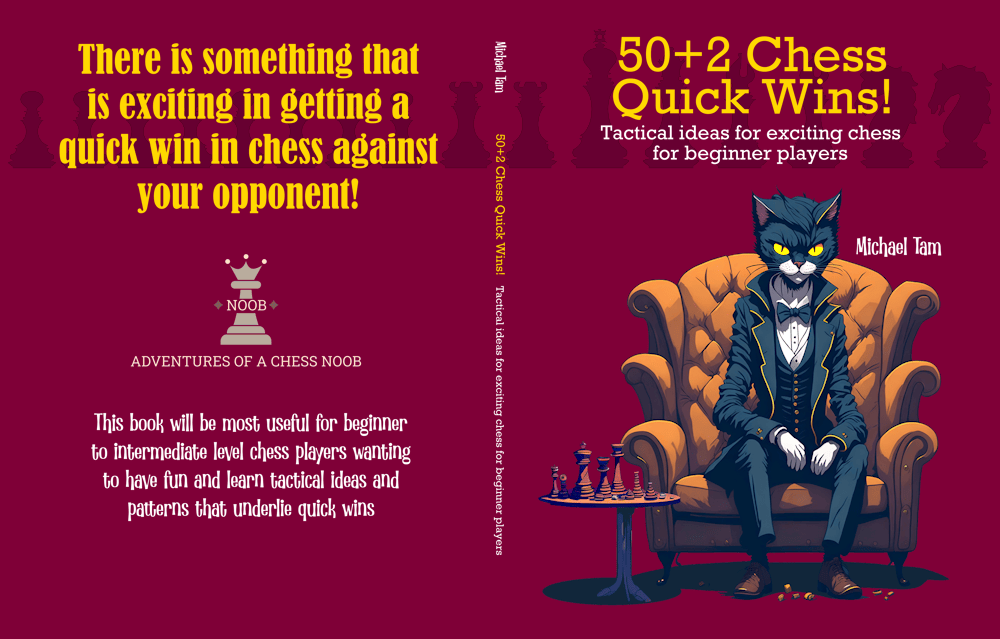
Greek Gift Sacrifice | CONFIDENCE IS BACK! 🤩 Smith-Morra Gambit
#sicilian #smithmorra #greekgift
A week ago, I published a video and article on how I had lost some confidence in my chess, having gone through a losing streak. I'd like to give thanks to all of you who connected with my content and gave words of encouragement! I have taken a bit of a break from chess over the past week and have felt a bit better.
I think this game is a good juxtaposition. In that last match, I had a completely winning position in a Greek Gift Sacrifice but felt like I was losing. This match is almost the opposite! I technically had a LOSING position in an unsound Greek Gift Sacrifice, but the mojo and momentum of the aggressive romantic attack carried the game to a win!
Let's have a look at this game in a bit of depth as it gives some insights on how a Greek Gift Sacrifice attack in practice, especially in thinking through what is objectively accurate and inaccurate, and what might psychologically be good and bad tactically.
The game starts off with a pretty normal Sicilian Defense: Smith-Morra Gambit Accepted, Paulsen Formation (1. e4 c5 2. d4 cxd4 3. c3 dxc3 4. Nxc3 Nc6 5. Bc4 e6 6. Nf3 a6). At the intermediate level (my opponent was rated in the 1400s in rapid), this is probably one of the most positions reached in the Smith-Morra Gambit Accepted. One of the advantages of the Smith-Morra Gambit is that evaluation-wise, White is almost equal, and the compensation thus is in quicker development and better position in the opening. Basically, it is relatively easier to play as White compared to Black. Indeed, at the beginning of the Sicilian Defense (1... c5), White has a statistical disadvantage to Black in terms of win ratio on the Lichess community database of lower-rated games of blitz and rapid at 47% vs 49% (~ 300 million games), but this is completely reversed at the Smith-Morra Gambit Accepted position at 52% vs 44% with White having a commanding win ratio advantage!
After (7... b5) and played (8. Bd3), which Stockfish 16 NNUE at high depth identifies as the most accurate move. The evaluation is still slightly in Black's favour but is approaching equality at around [0.00 to -0.05]. The much more common move (according to the Lichess community database of lower-rated games of blitz and rapid) is (8. Bb3), but then Black has (8... Na5), which I find kind of annoying. What was my plan? Having had my bishop kicked from the c4 position, and with Black's f7 pawn no longer available as a target with Black's e-pawn on e6, I wanted to set up a potential Greek Gift Sacrifice attack, or to make it available!
On move 12, Black castles kingside and so my earlier strategic manoeuvre paid off! To make it work, I needed to open the diagonal for my light square bishop on d3 by moving my e-pawn forward, and to open the diagonal for my queen on d1 by moving my knight on e2. These are the next two moves I make.
Black didn't see the tactic coming. It's interesting that in this game, the Greek Gift Sacrifice is technically inaccurate as Black could defend against it. On move 14, Black's capture of my e-pawn (14... Nxe5) is an inaccuracy (one that I was baiting) as Nd5 is better. This opens the diagonal for Black's queen to defend the critical g5 square.
However, what neither my opponent nor I saw in game is that Black's knight on e5 defends the g4 square. This means that after the first two steps of the Greek Gift Sacrifice (15. Bxh7+ Kxh7 16. Ng5+), Black could potentially prevent the necessary third step by moving their king forward to g6 or h6, which stops my queen from infiltrating and threatening mate. This was a conceptual insight that I hadn't quite appreciated until analysing this game, and it's one to be mindful of!
Black played the human (16... Kg8), which is a blunder. My queen flies to the h-file (17. Qh5) and immediately threatens checkmate. Black finds their only good move with a bishop sacrifice, which the chess.com engine rates as a brilliancy! However, this ended up being only a delaying move as Black needed to find the follow up with that gain of tempo that would stop the mating attack. They did not find it. On move 20 after I played (20. Ng5), Black pondered the position for a while, and then opted to resign. The best move for Black is to trade their queen for my knight, something that is difficult to contemplate. GG!
The big takeaway from this game is understanding the requirements and tactics that underlie the Greek Gift Sacrifice. It's a deadly weapon in its accurate form, and still very potent psychologically even when it's inaccurate!



